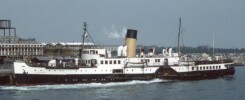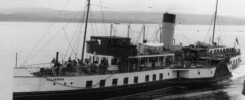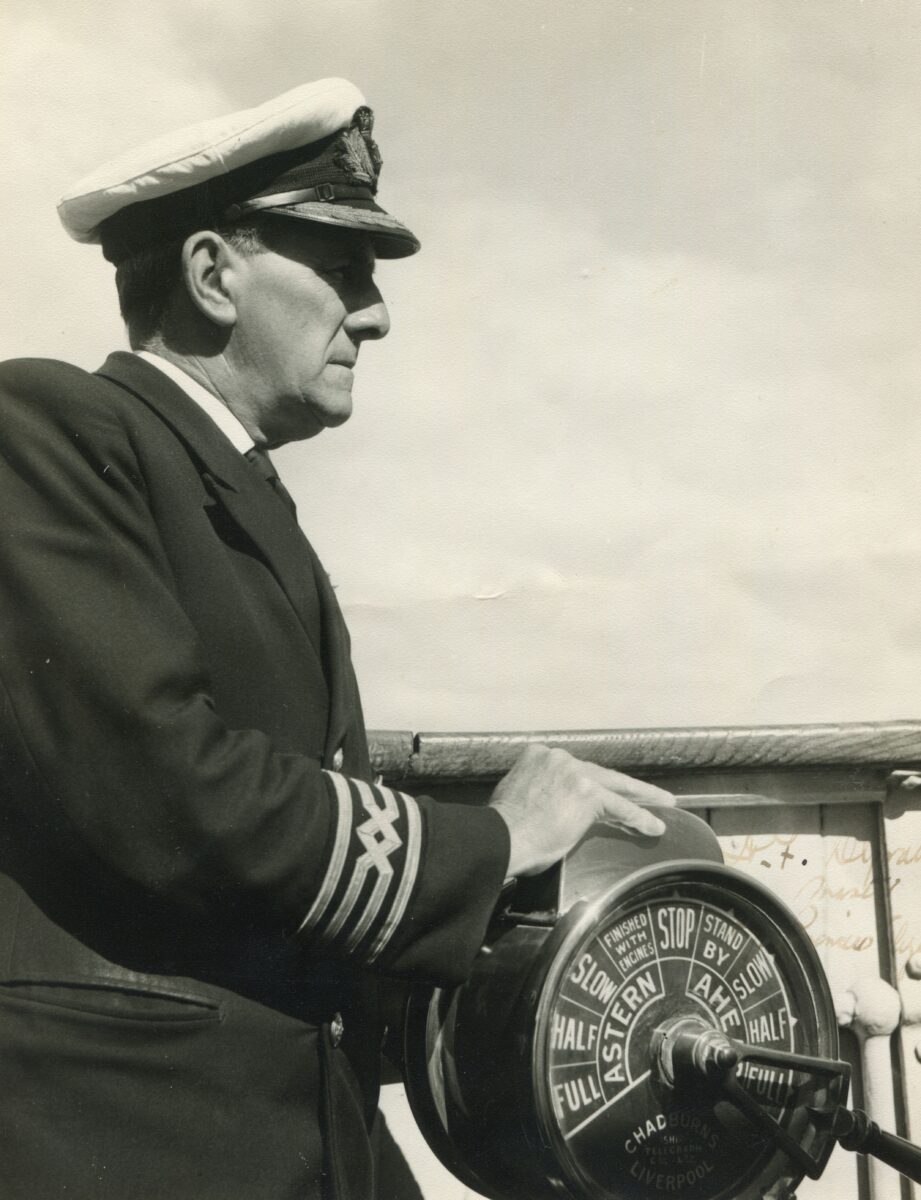
Capt H F “Harry” Defrates was a keen exponent of paddle steamer preservation in the 1960s and was in the forefront of trying to find new lives for both Princess Elizabeth and Consul egged on as ever by his friend Mrs Eileen Pritchard who had the distinction of being PSPS member number one.
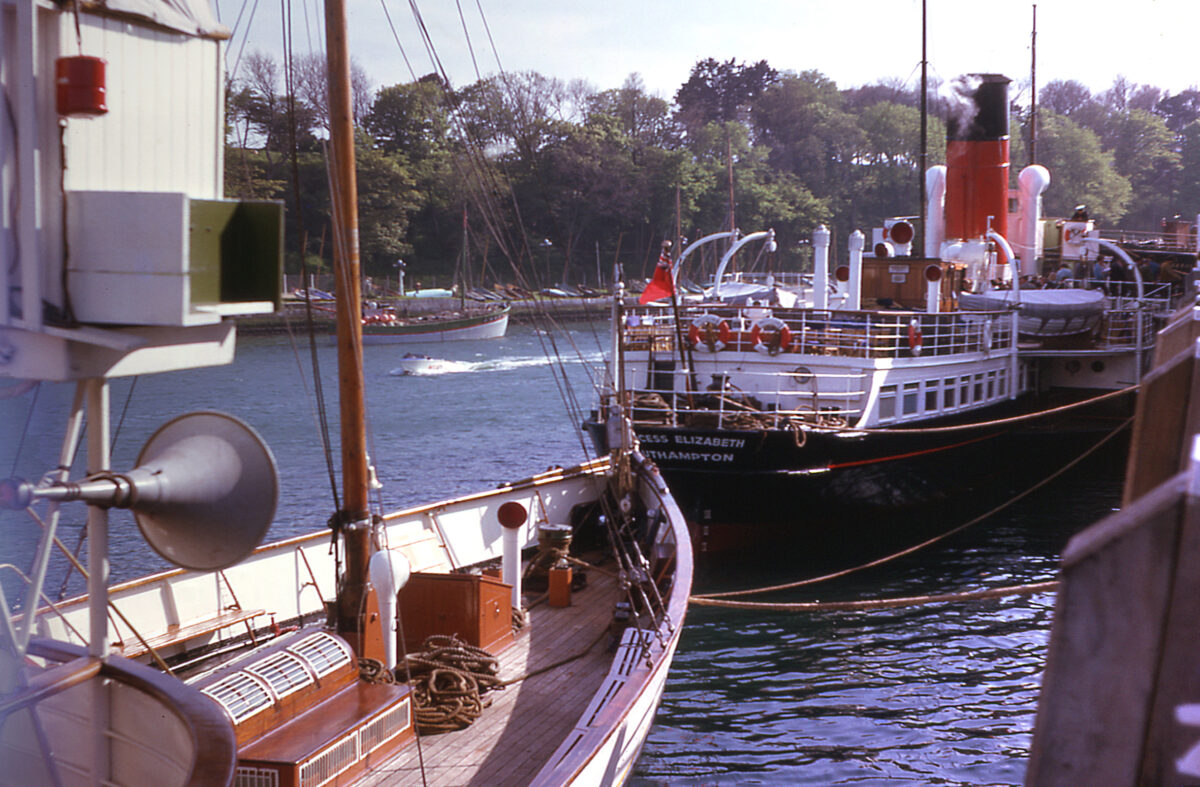
Having commanded Consul in 1963 he was back on the Princess Elizabeth in 1964 running from Weymouth in ruinous (for both companies) competition with Consul with the two paddle steamers competing for a diminishing commercial market where there was insufficient business to sustain just one let alone two paddle steamers. That year Capt Defrates turned 70 the age at which Trinity House then withdrew pilotage certificates. So that was the last season he was in command of a paddle steamer.
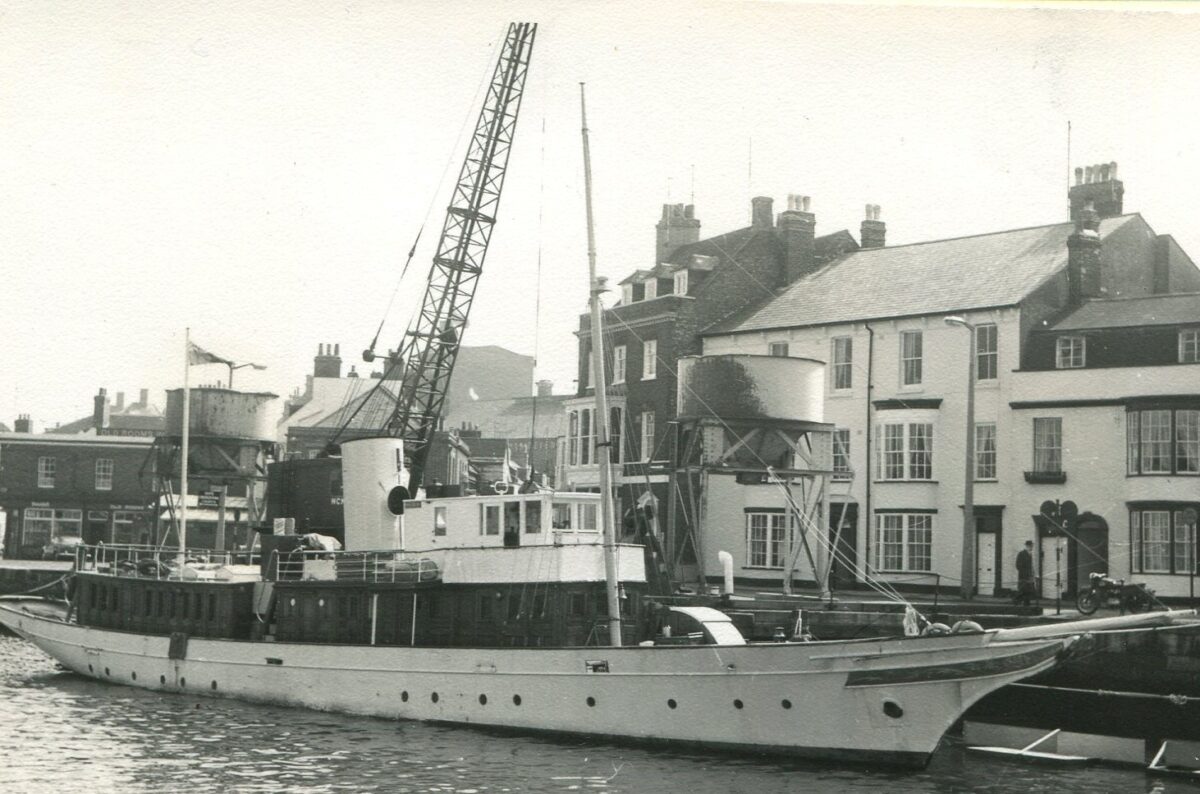
However he continued to go afloat after that from time to time commanding both an MFV taking Sea Cadets to Guernsey and in 1967 the luxury steam Yacht Medea. He continued to take an interest in and promote paddle steamer preservation and smaller excursion vessels and with his wife visited their son John who worked for the United Nations in Beirut where he lived with his wife the Indian film star Mona Cabral. Remember at that stage Beirut was still very much a playground for the rich which attracted moneyed elites from around the globe including movie stars and the like in the days before the desperate chaos and troubles began.
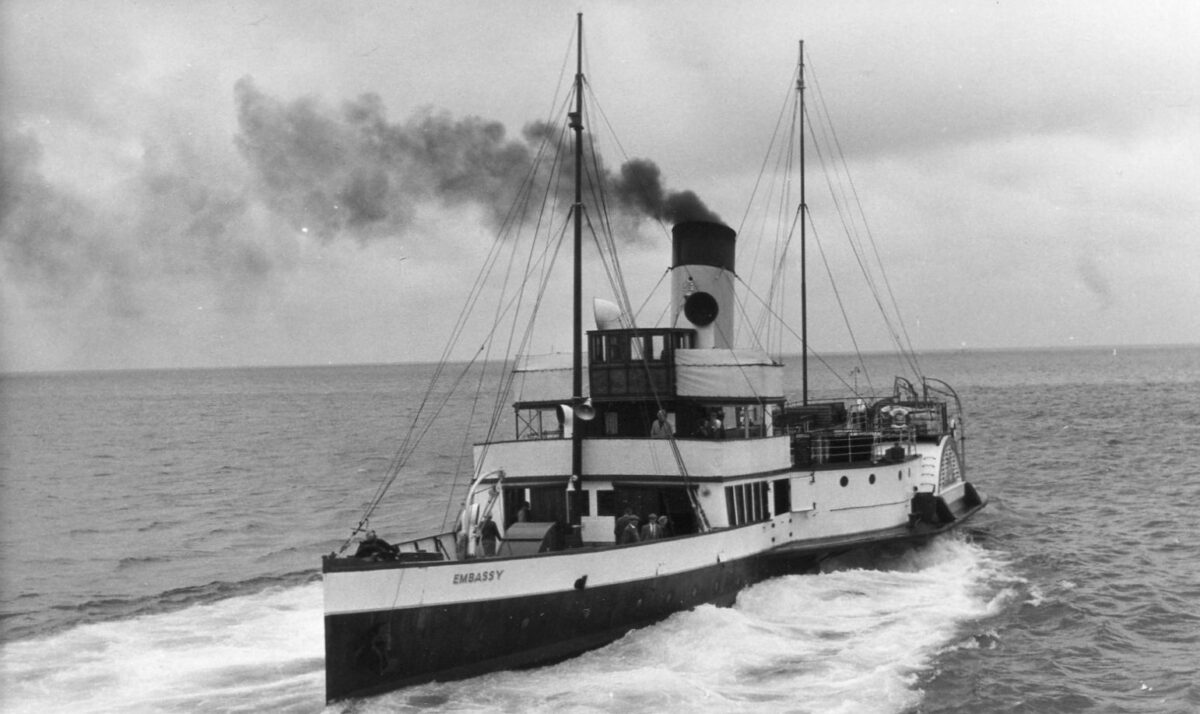
When Capt Defrates heard that Embassy had been withdrawn and that there would therefore be no paddle steamer sailings from Bournemouth in 1967 he was in Beirut. He discussed it with his son. They were in company with others who had money. They started to explore the idea of buying a small Diesel vessel and either running her themselves from Bournemouth to the Isle of Wight or trying to do it in some sort of association with Bolson who already had his Fairmiles running from Bournemouth to Swanage and around the so called “Dorset Lakes” of Poole Harbour. Capt Defrates asked H E Moss if they had anything which might be suitable on their books. On 17th April 1967 he received a reply.
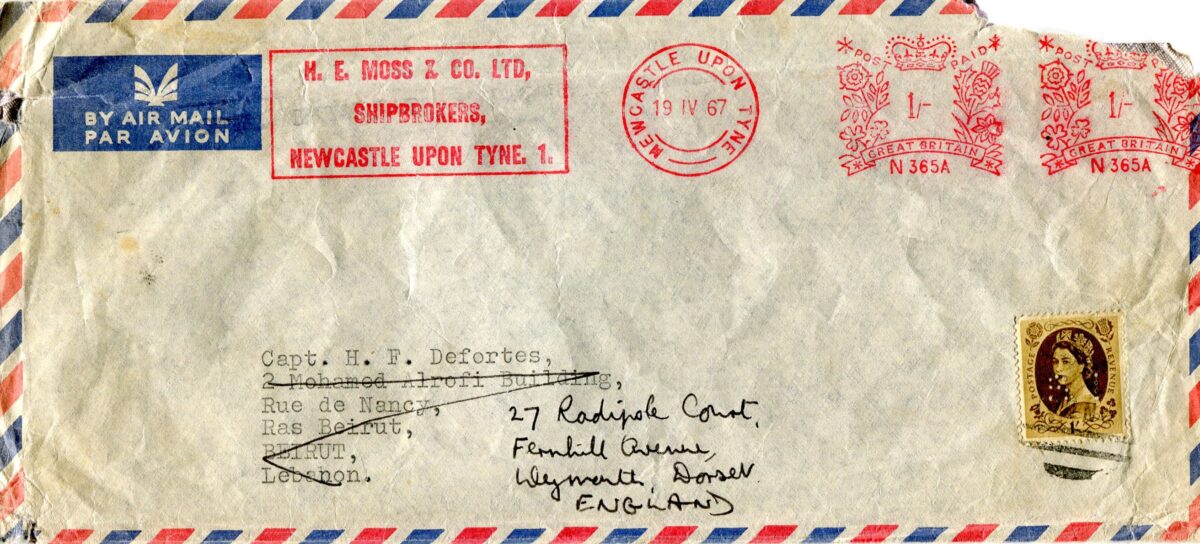
As you can see H E Moss got the spelling of his name wrong. And by the time the letter arrived in Beirut he had already returned home to his flat at 27 Radipole Court, Weymouth so the letter had to be forwarded on.
The reply from H E Moss suggested three vessels Regal Lady, Orwell Haven and Thornwick.
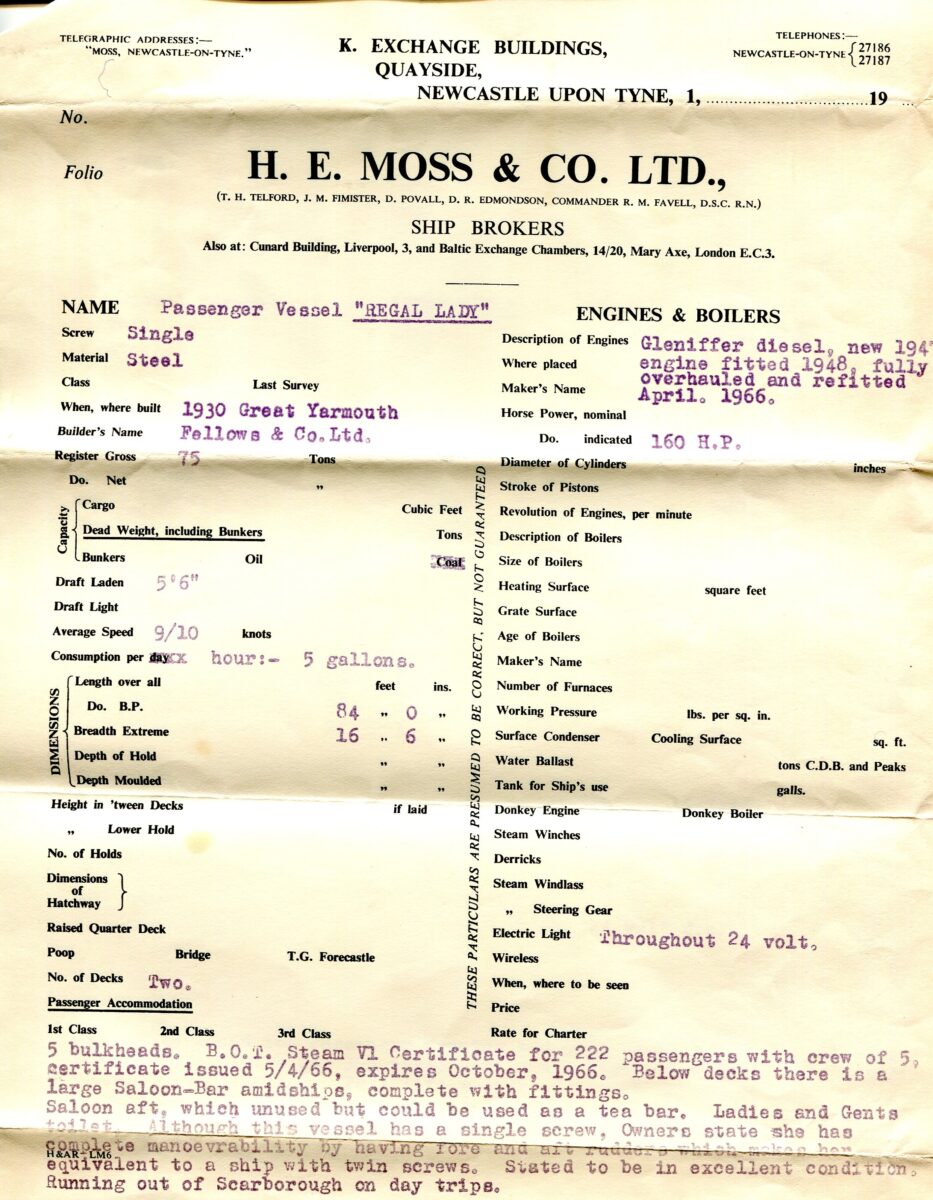
The price of Regal Lady was £13,000 or “Try any reasonable offer”. (Around £190K today).
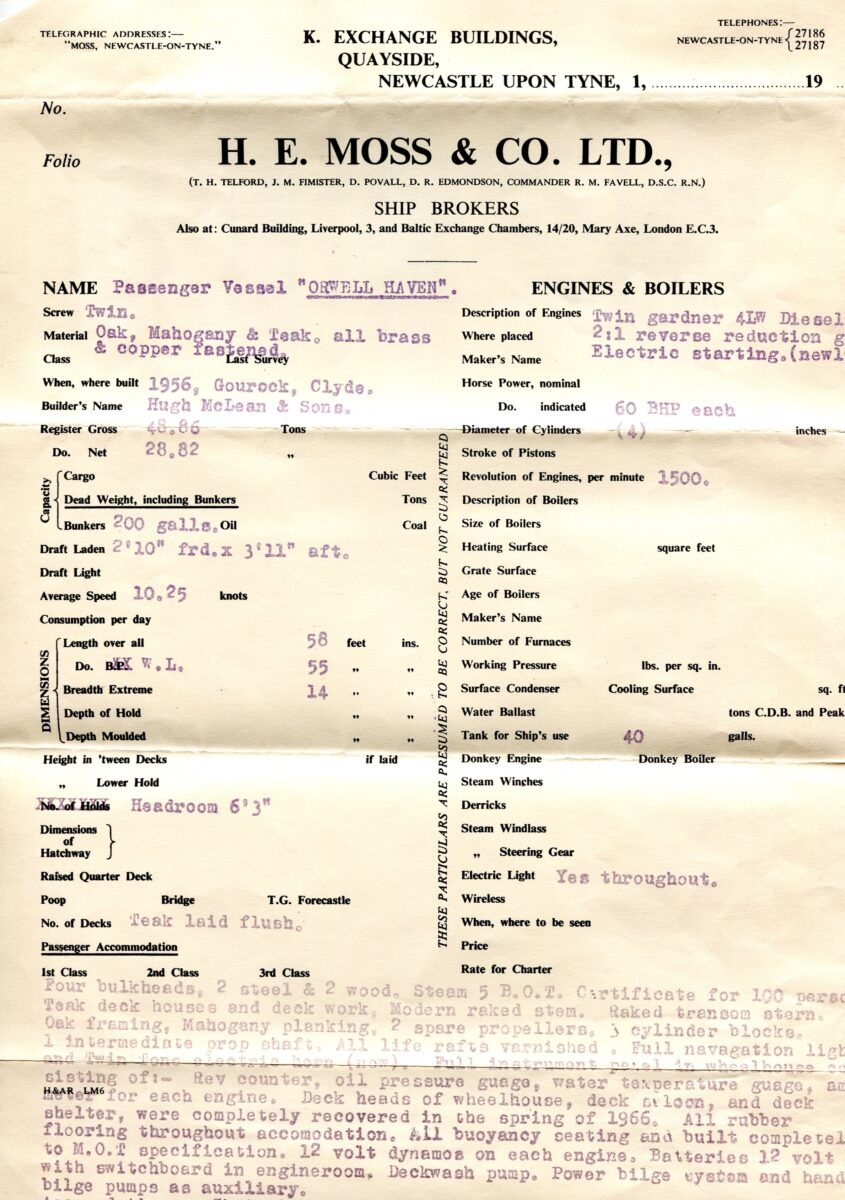
The price of Orwell Haven was £11,000 try £9,500 (£167K – £144K today).
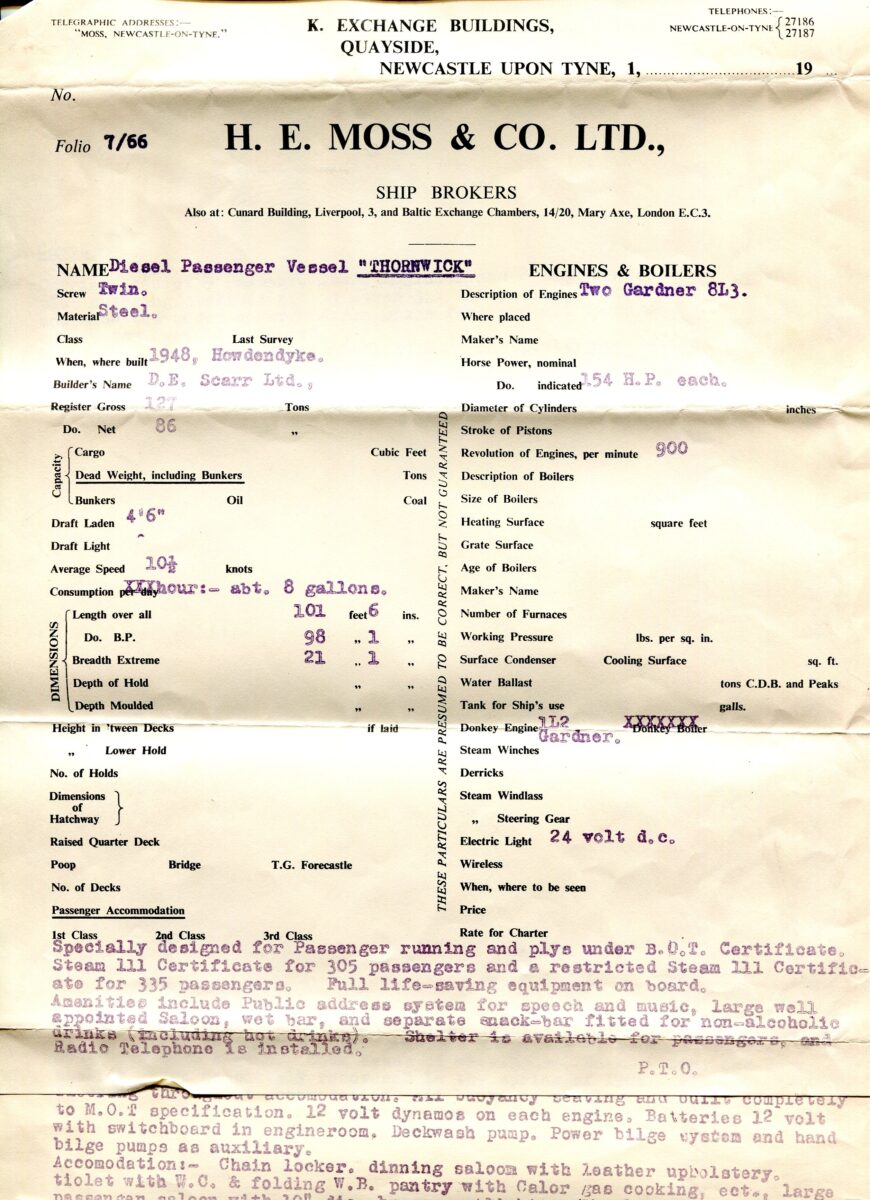
The price of Thornwick was £20,000 try £17,500. (£303K – £266K today).
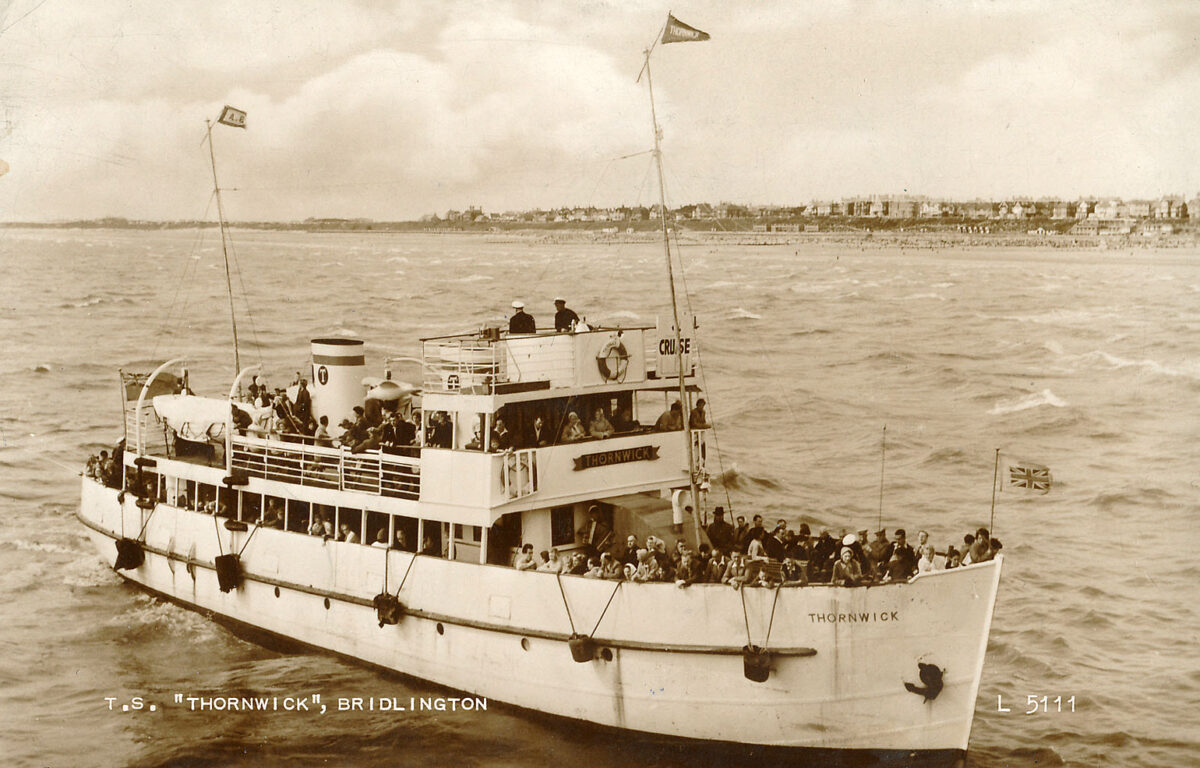
However by the time Capt Defrates received this letter, things had already moved on in other directions. Bolson had himself been looking at buying a small Diesel vessel to take the place of Embassy at Bournemouth. He had noticed that Thornwick was up for sale. Of the three vessels up for sale with H E Moss at that time, Thornwick was the largest. She had a Class III BOT Passenger Certificate. She was less than 20 years old. So he bought her, engaged Capt Defrates, who he had known for years, to bring her round from the NE Coast and so Thornwick arrived in Poole in time for the 1967 season.
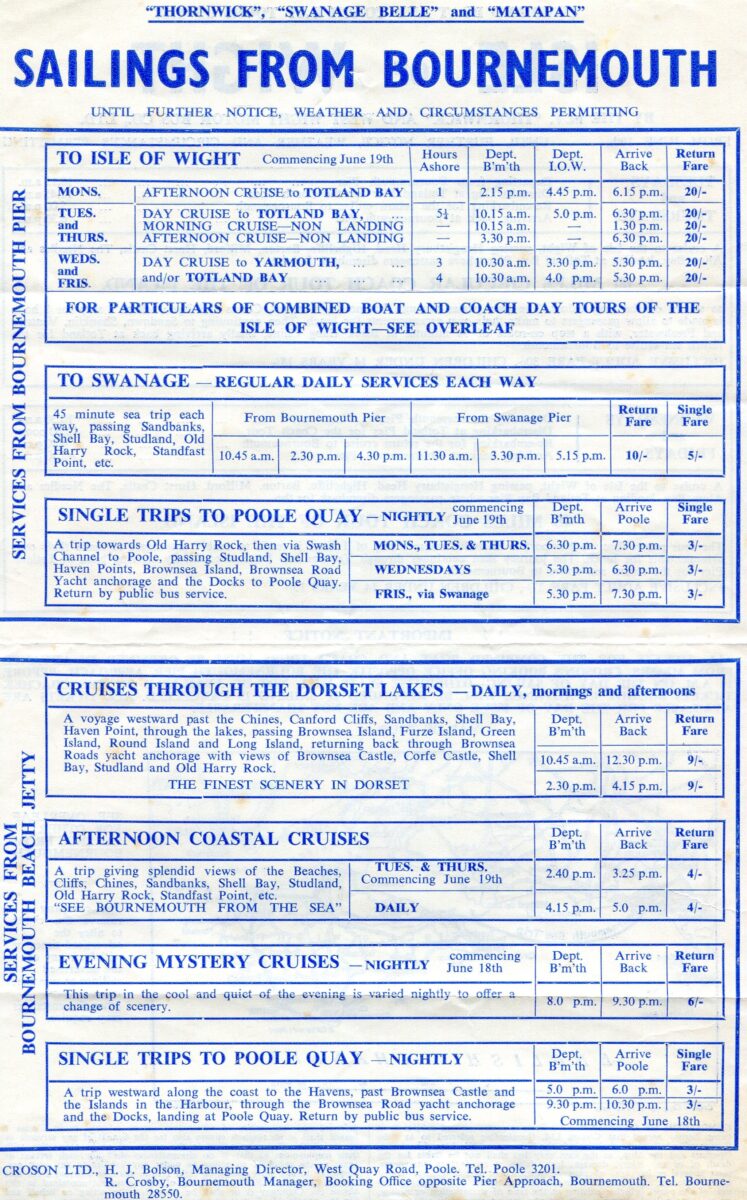
Thornwick’s service in her first year running from Bournemouth sort of replicated that of Embassy but not quite. On Mondays she was scheduled to run an afternoon cruise leaving Bournemouth at 2.15pm giving an hour ashore at Totland Bay Isle of Wight with return to Bournemouth at 6.15pm. On Tuesdays and Thursdays she offered both morning and afternoon cruises to Totland Bay leaving Bournemouth at 10.15am and 3.30pm with many of those on the 10.15am departure going ashore for the whole day or opting for the 65 mile coach tour round the Isle of Wight. Before setting off once again for Totland Bay at 3.30pm she was scheduled to run a forty minute “Afternoon Coastal Cruise” from Bournemouth at 2.40pm. On Wednesdays and Fridays she was away from Bournemouth at 10.30am with a call at Totland Bay and then on to Yarmouth with the option of a 45 mile coach trip round the Island. On Fridays she called at Swanage on her way to and from Bournemouth for the day trip to the Isle of Wight. On Sundays she usually ran the Swanage service out from Bournemouth at 10.45am, 2.30pm and 4.30pm and back from Swanage at 11.30am, 3.30pm and 5.15pm.
I can’t remember the name of Thornwick’s master that season. Can anyone help me please? jhm@kingswearcastle.co.uk. Her mate was Fred Miller who had been a mate with Cosens and also mate of Princess Elizabeth for the latter part of the 1964 season in between supplementing his income as a taxi driver. Fred knew who I was from the 1964 season on the Princess Elizabeth and invited me up on Thornwick’s bridge for the one trip I took on her that season on the run up in the evening from Bournemouth back to her overnight berth alongside Poole Quay. I enjoyed the trip. She had a little bit of an old fashioned air about her particularly with her open alleyways outside her accommodation at main deck level. I liked her small open bridge.
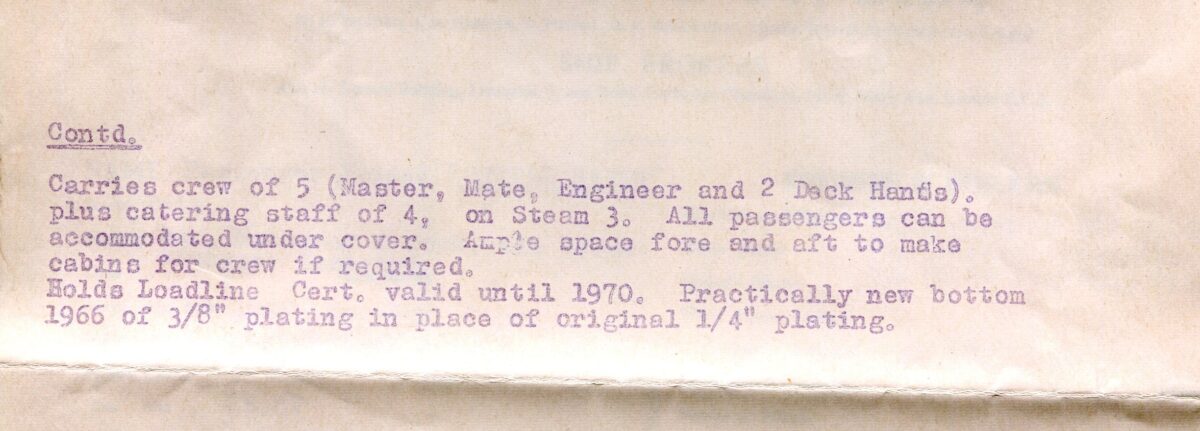
The continuation sheet of the H E Moss flyer about Thornwick also shows two more big pluses for her. Firstly she needed an operating crew of just five. Compare that with Embassy which needed an operating crew of twelve. That’s nearly a 60% reduction in crewing costs. And she had a “Practically new bottom in 1966 of 3/8″ plating in place of original 1/4″ plating.”
Gosh! “Practically new bottom” in 1966 only eighteen years after she was built. That’s quick. Ships are built for a design life of about 25 years. Some last a little longer. Others less so. But all ships start to need major structural attention after about 25 years give or take. And if you want to keep a ship in service for the very long term you must be prepared to spend significant sums on her structure over the years just as was the case with all the paddle steamers from the past which had much longer careers. But 18 years does seem a bit quick. Maybe the quality of steel used for her construction just after the war was not so great as for sure there is steel and there is steel. And it does just show what ship operators are up against in trying to keep their fleets up to the mark for survey every year, in ticket and in service trading as they do in such a hostile marine environment as the sea.
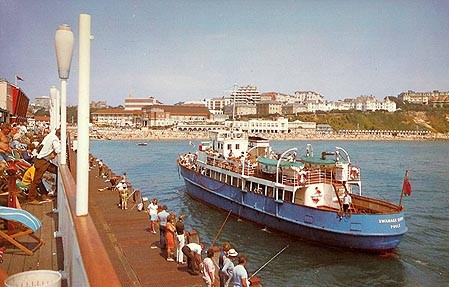
After the 1967 season Bolson undertook more structural work on Thornwick, including fitting her with a new bridge with a wheelhouse. She emerged from this work in 1968 with the new name Swanage Queen.
As most of you will know we have been rebuilding Kingswear Castle to keep her going well beyond her design life. The first phase of this is now complete but we are still fund raising for Phase 2. Do help if you can. To find out more click here.
Thank you.
Kingswear Castle returned to service in 2023 after the first part of a major rebuild which is designed to set her up for the next 25 years running on the River Dart. The Paddle Steamer Kingswear Castle Trust is now fund raising for the second phase of the rebuild. You can read more about the rebuilds and how you can help if you can here.
John Megoran

